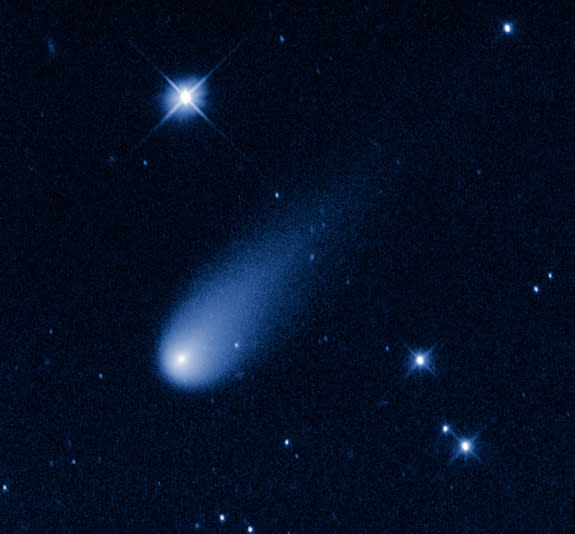 Science and Weather
Science and WeatherMars satellites and rovers get a front-row seat to Comet ISON in early October

As Comet ISON continues its plummet towards the Sun, there's high hopes that it will give us a spectacular show, but the front-row seats for the show are actually reserved for the satellites and rovers we currently have exploring Mars.
The folks at Science@NASA put together a video to explain what's going on:
What I find particularly interesting, and exciting (given the rather gloomy news about ISON we've been hearing recently), is that although ISON is still fairly dim, it hasn't yet reached the our solar system's 'frost line'. If you remember discussions about the 'habitable zone' around a star (mostly when talking about planets around other stars), the frost zone is the point where the habitable zone essentially starts. This is where the liquid water in ISON will start to melt and that's when the comet could get a lot brighter!
[ More Geekquinox: Amateur astronomer spots star brightening into nova explosion ]
This seems to be a busy couple of years for Mars and comets. ISON will fly by at a distance of about 10 million kilometres on October 1st, 2013. Next year, on October 14th, Comet Siding Spring will be passing by as well, but much closer. Originally, there was a chance that the comet could actually hit Mars, but now astronomers have narrowed that down, and it will fly by at just over 120,000 kilometres. That's the equivalent of driving around the Earth three times, but astronomically-speaking, that's close!
Geek out with the latest in science and weather.
Follow @ygeekquinox on Twitter!


